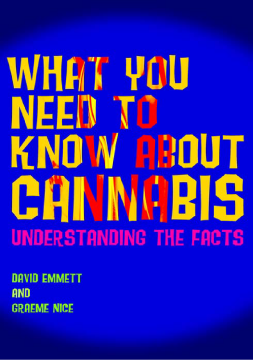
Additional Information
Book Details
Abstract
Does cannabis really trigger schizophrenia? Is it true that cannabis is a non-addictive drug? What's the difference between hash and skunk?
According to the UN's estimate, 160 million people around the world use cannabis; that's roughly 2.5 per cent of the world population. Despite these figures, most people have a profound lack of knowledge about cannabis, made all the more dangerous by the changing nature of the drug itself, with much higher levels of potency being seen today than ever before.
What You Need to Know About Cannabis offers accessible, accurate and objective information about the drug, allowing the reader draw their own conclusion. The book demystifies the latest research about the effects of cannabis, particularly in relation to mental health issues.
Suitable for use as a resource for teachers, professionals, parents and young people who want to know the facts about cannabis, this book tells you what you need to know about this controversial drug.
David Emmett, PhD retired from a 30-year career as a police officer in 1996, and has over 25 years' experience in the field of substance abuse, working directly with drug and alcohol abusers. He has given advice to schools and colleges as well as being involved in training for teachers, health workers, police officers and other professionals. He regularly lectures on substance misuse topics at UK universities. He lives in Hampshire, UK. Graeme Nice has worked in the fields of counselling, substance misuse and blood-borne diseases for over 20 years. He is Deputy Team Coordinator of an NHS substance misuse team in Hampshire, England, where he holds a caseload of drug clients. He has qualifications in counselling, health education and teaching.
Table of Contents
| Section Title | Page | Action | Price |
|---|---|---|---|
| Foreword by Robert Chambers | |||
| Preface | |||
| Acknowledgements | |||
| 1. Conceptual Specifications | |||
| 2. Space~related PRA Methods | |||
| 3. Time,related PRA Methods | |||
| 4. PRA Relation Methods | |||
| 5. Summary | |||
| 6 Myths about PRA | |||
| References | |||
| Index | |||
| About the Author |
